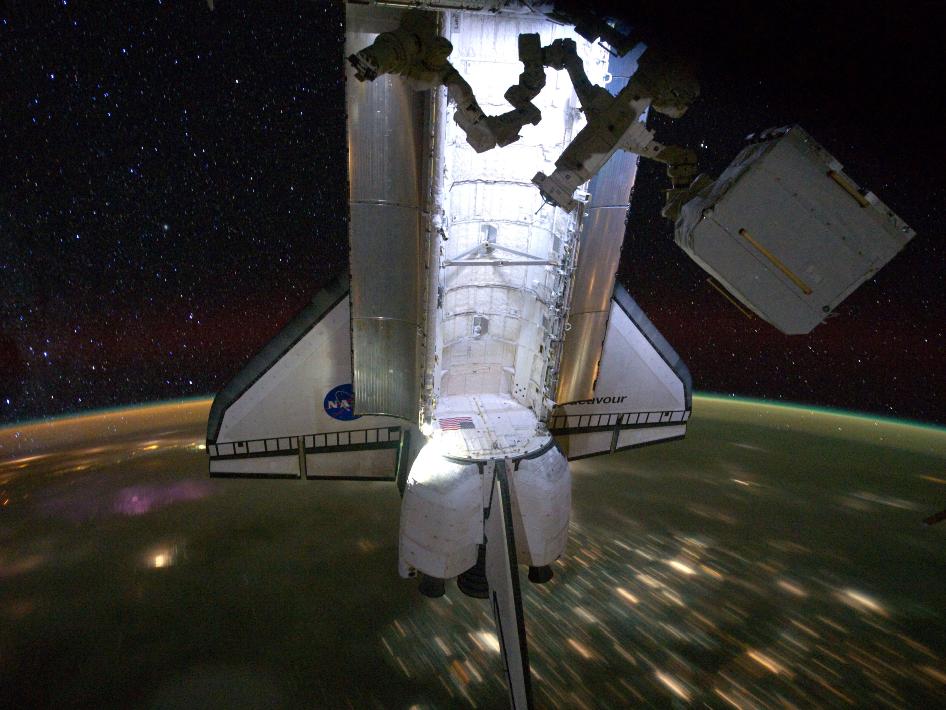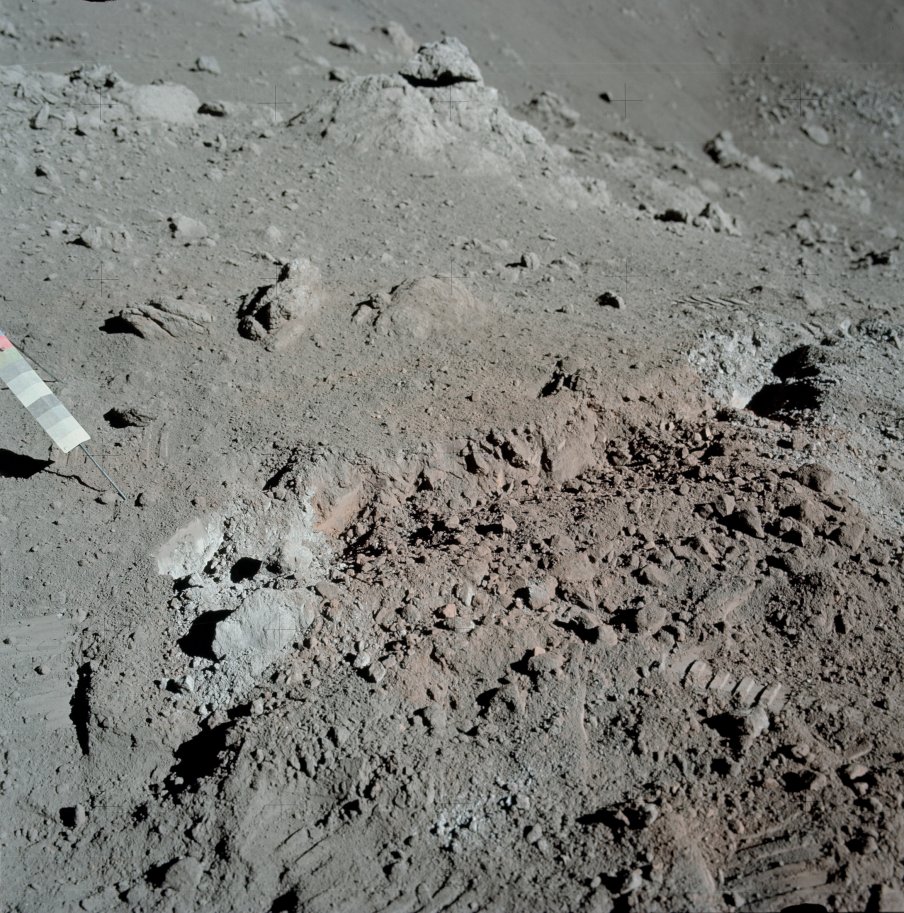Added 1 new A* page:I went to NASA's site to find a gratuitous Moon photo for reasons that will soon become apparent, but this popped up looking neat, and anyway it's topical, as it shows the Space Shuttle Endeavour docked at the International Space Station on the 28th.

image by NASA (source)
Endeavour has left the station and is due to land on Wednesday; this is Endeavour's last mission, and the second-to-last Space Shuttle mission.
~~~~~~
Speaking of Endeavour though, this AP article from a week ago Sunday illustrates the difficulties and hazards of doing even simple things in space like refilling a coolant tank and lubricating a mechanical joint: Endeavour astronauts executing those tasks had to dodge frozen flakes of ammonia coolant, and then, during the joint work, catch a bolt that unexpectedly popped off.
Another bolt popped off and couldn't be caught, so it floated away into space, and is now presumably in Earth orbit, joining tens of millions of other pieces of dangerous space debris up there; with the high relative velocities of space travel, that bolt could some day--although it is incredibly unlikely that this particular bolt would be involved out of all the debris up there--end up causing critical damage to a passing spacecraft.
~~~~~
Speaking of junk from space, this AP article from the day before the other one tells of a NASA sting operation ending in the successful detention of a California woman trying to sell what she claimed was a rock from the Moon, for which she was asking $1.7 million--unfortunately for her, her prospective buyer turned out to be an undercover NASA agent (I didn't know they had those!).
According to the article, the Apollo missions brought back 840 pounds--2,200 rocks--of Moon stone between 1969 and 1972, and pieces were given by President Nixon to all 50 states, and to 136 countries; the rocks "are considered national treasures and are illegal to sell." Many of them have gone missing in the intervening decades, however, and "a recent count showed 10 states and more than 90 countries could not account for their shares of the gray rocks," and the black market for real (or fake) Moon rocks has really taken off. For instance, in 1998 a NASA sting recovered one of Honduras' Moon rocks that was going for $5 million on the black market, and in 2009, a museum in the Netherlands found that one of its rocks was a fake.
Hm, NASA still has a lot of the rocks...and could always use more money... Ah well I guess they want to keep them for research and historical purposes and all that. The article also mentions that one way you can tell if a lunar rock is legit is if it is found to contain armalcolite. Armalcolite is a titanium-rich mineral discovered in lunar rocks, and named after the three Apollo 11 astronauts (ARMstrong, ALdrin, and COLlins); it has since been found on Earth, and synthesized in labs. And two other minerals were discovered in Moon rocks: tranquillityite, since found only in a Martian meteorite that landed in Africa, and pyroxferroite, later found in lunar and Martian meteorites, and in the Earth's crust.
As of the article's publication, it doesn't seem that they knew whether or not the captured "Moon rock" was legitimate.
~~~~~
And finally, this AFP article (hadn't looked them up before; apparently it's French news agency Agence France-Presse--founded in 1835!--but I can't get their web site to respond :P) cites a new study saying that the interior of the Moon may contain 100 times more water than previously supposed. They studied some of the "orange glass soil" brought back by the final Apollo mission, 17, in 1972

image by NASA (source)
(the orange color "is caused by microscopic glass beads created by volcanic processes earlier in the Moon's history" (3.7 million years ago, according to the AFP article)), specifically examining tiny rock samples inside it that were hermetically sealed in the crystal, and had thus retained their moisture. Their finding: that old lunar magma had about as much water in it as lava found here on Earth--so maybe the Moon isn't, or at least hasn't always been, as dry and dusty as its modern exterior would suggest!
One thing I particularly like about this finding is that while it suggests the Earth and the Moon may have had a common origin, it pretty nearly nixes the silly yet popular theory that the Moon is a chunk of the Earth that got dislodged by an impact with another planet that has since mysteriously vanished; in fact, the Wikipedia article on that so-called giant impact hypothesis still says it's "the favored scientific hypothesis for the formation of the Moon," even though that's based on such circumstantial evidence as once-molten material on the Moon, and the Moon's supposedly tiny iron core. Well, hopefully this wet Moon finding will put the damper on that silly theory eventually (I mean really, like you hit a planet with another planet and a nice moon just pops out, one planet survives just fine, and the other vanishes altogether, riiiiight :P), since an impact like that theory proposes would have been so energetic as to vaporize any moisture that could have been in the eventual Moon--and yet there is in fact moisture in these old Moon rocks.
|
